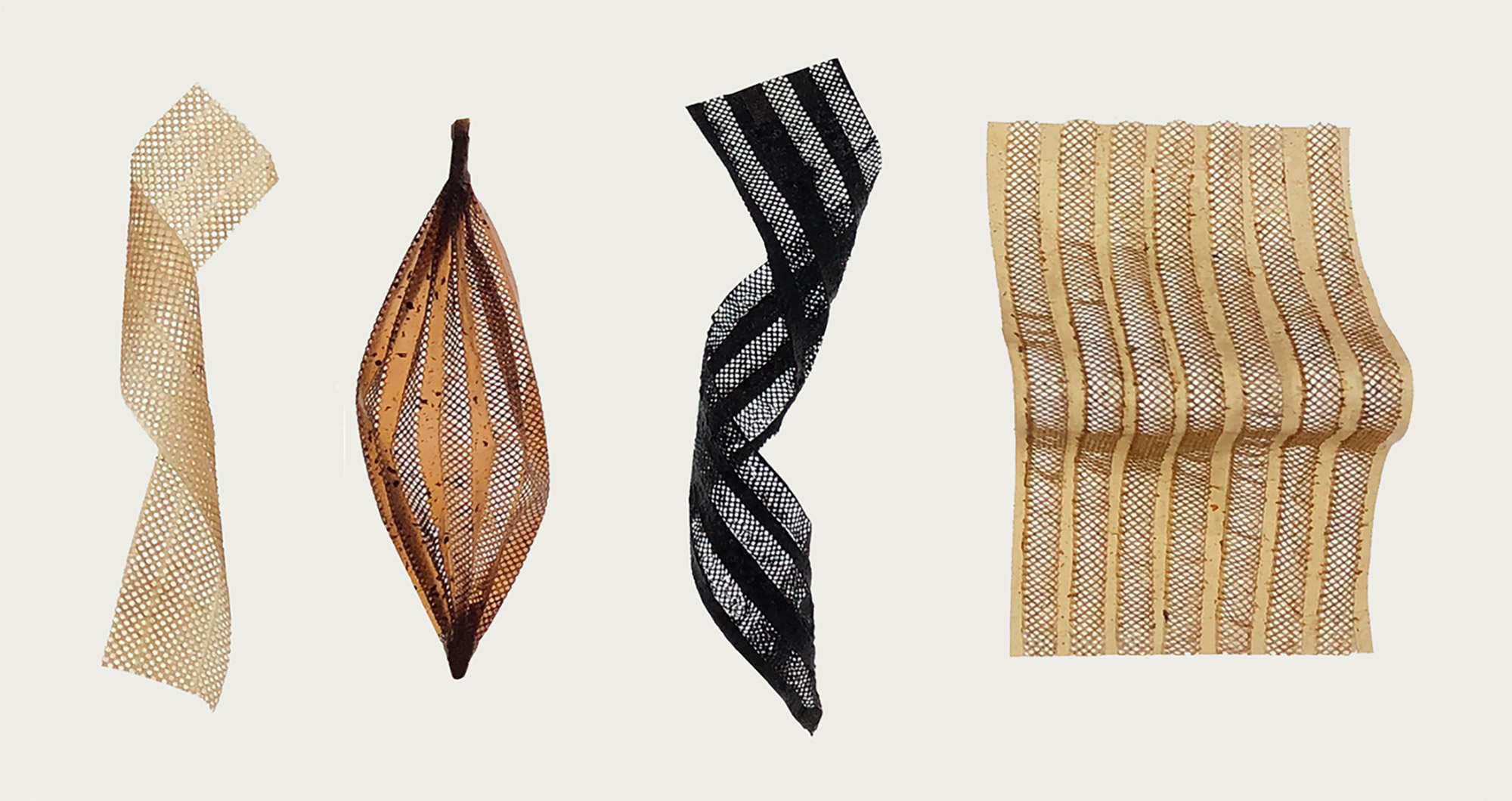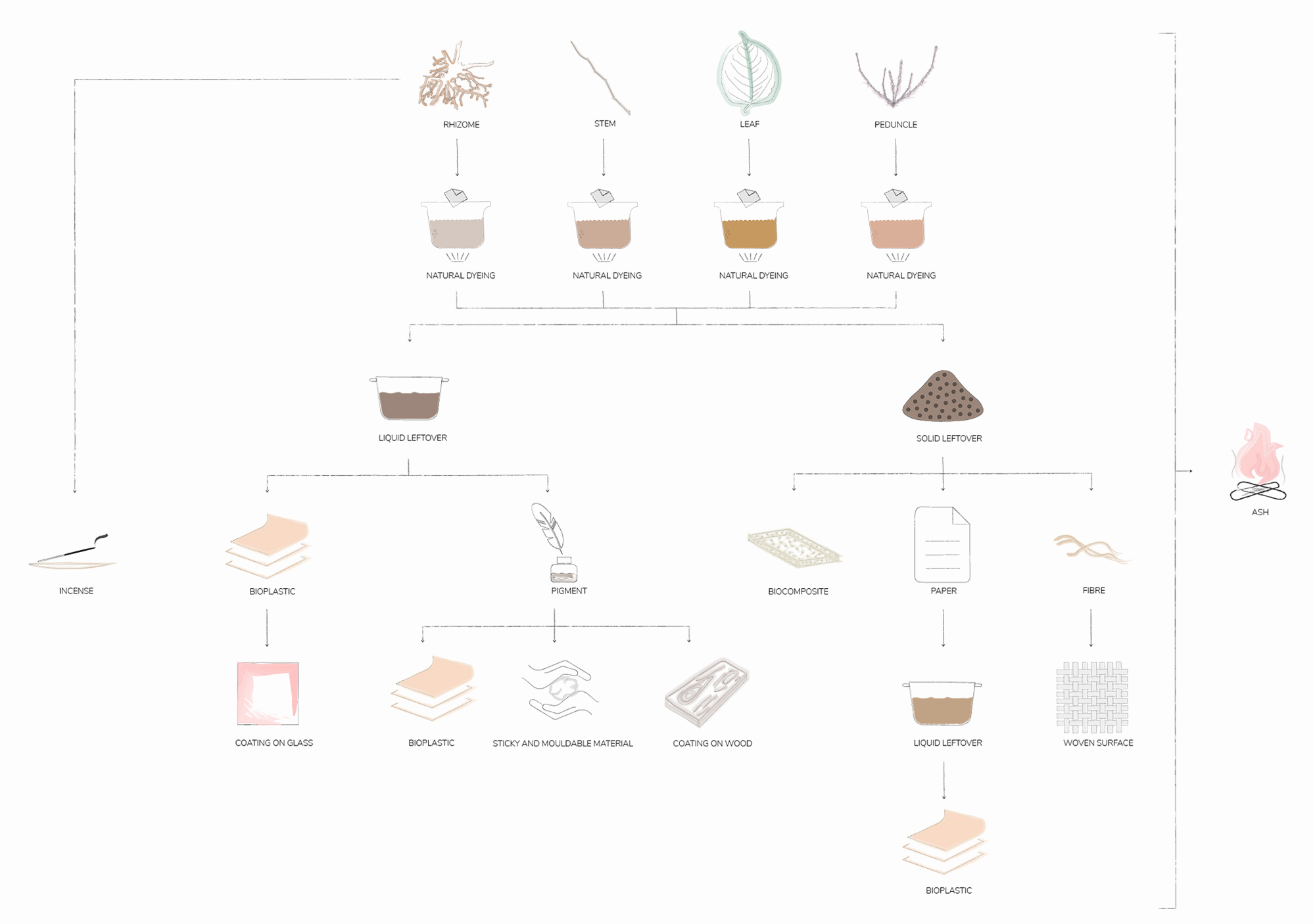Japanese knotweed project

Useful information
- Team members
- Marina Belintani
- Country
- United Kingdom
- Keywords
- Globally connected Locally produced Regenerative economy Resilient economy Biomaterials Effective systems Collective Response Sustainability Circular Economy Open source Future thinking Citizen empowerment Weed Waste.
Short Description
The project aims to transform a problematic plant into opportunities for different industries.
Detailed Description
Reynoutria japonica is considered one of the worst weeds in Europe and has caused serious damage to the natural and built environment. Besides the process of removal being laborious and poisonous, it is also very expensive, costing the economy of some countries more than £100 million per year for its removal.
Japanese knotweed project aims to reduce the negative impact this species is creating by using design as a tool to turn something negative into something positive. Through an investigation process of its parts, the plant proved to be a precious local source of raw material for different industries.
By adding value to this abundant source of raw material located in 45 countries, more self-sustaining and resilient production systems can emerge. Globally connected by an open source platform of learning and sharing, citizens will have the power to become active agents of change in their urban environment thus promoting self-sufficient cities.
Project Details
- Does your design take social and cultural challenges and human wellbeing into consideration?
The project is based on a socioeconomic business model in which collaborative work plays an important role. Being a plant with such a bad reputation, a change of mindset towards this reputation is fundamental and, to achieve this, it is necessary to understand how the plant is perceived in its native countries.
Originally from Japan and China, the plant is considered a healing plant and has been used as medicine for thousands of years. Some of the healing properties are anti-inflammatory, antibacterial, protects ageing skin, lowers blood sugar and revealed to be effective in fighting cancer. It is also an edible plant high in antioxidants that helps digestion and controls bad cholesterol; its rhizome contains resveratrol, an anti-aging compound found in grapes and massively used for the pharmaceutical industry. The plant has a pleasant smell that, combined with these properties, has a great potential to be explored by the cosmetic industry as well.
The potential of this plant to reach different industries is endless. During my research, I was able to develop materials that can be used in a wide range of industries, such as product, fashion, textile, architecture and beauty. So, giving attention to what we have in abundance has the power to reframe language and attitudes surrounding this species as well as prospect more coherent systems of production.
- Does your design support sustainable production, embodying circular or regenerative design practices?
The strategy addresses a range of environmental objectives such as carbon reduction and the zero waste concept through the application of a circular and local manufacturing system.
During the creative process, each part of the plant (flower, stem, leaf, rhizome) was explored individually and primitive processes of making were used to find out what kind of materials it is possible to extract from the plant. After its deconstruction, all residues and leftovers were repurposed whereby nothing was left behind. Throughout a multisensory application and circular approach, colours, scents, materials and different properties were discovered revealing how many opportunities can be extracted from a local plant.
As an abundant source of raw material in many parts of the globe and almost impossible to eradicate it, harvesting the plant correctly and periodically, helps to avoid its rampant propagation and can be used as food, medicine or raw material for making goods. Being aware of the potential of the plant and its residues in each production process, can contribute to establishing a greater connection between different makers / industries. What is waste for one can become in raw material for another.
This valuable economic opportunity that japanese knotweed offers can only be explored
on its totality if people understand not only the value, but also the process of transformation into something.
- Does your design use principles of distribution and open source?
The core project strategy is to connect people with a passion for plants and interested in engaging with the local ecosystem as well as working collaboratively. In this way, we can create a community globally connected to knowledge and capable of operating in their cities, thus promoting more resilient and self-sufficient production models.
The main challenge and uniqueness of my project is to connect people and different industries through a plant that has a negative impact on the economy and environment. An open source website can become a media of substantial change towards a more democratic and horizontal system of learning. Starting by sharing my recipes with japanese knotweed, I hope that people would be able to try at home and perform much better, improving them, discovering new properties and ingredients and also sharing with others. In this way, citizens will become active agents of change in their communities, building more resilient cities and a stronger connection with nature.In this way, we can imagine productive cities working together with local communities, institutions and industries, thus encouraging a new economy.
- Does your design promote awareness of responsible design and consumption?
According to Anthony Dunne, 'Design must not just visualise a better world, but arouse in the public the desire for one'. So, when we share information and show the value of a common plant, such as Japanese knotweed, we generate awareness. A change in thinking around invasive species can result in the expansion of the way we approach this issue and, potentially, generate change in habits and consumption. By proposing more resilient systems, productive and self-sufficient in cities, it is possible to establish a more coherent relationship with the planet and live harmoniously within the bounds of the planet’s resources.
Images


